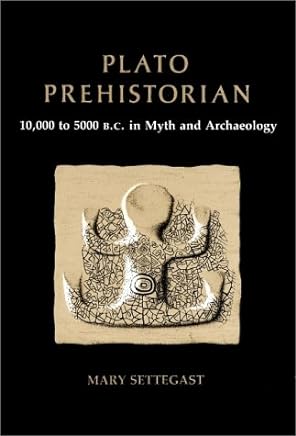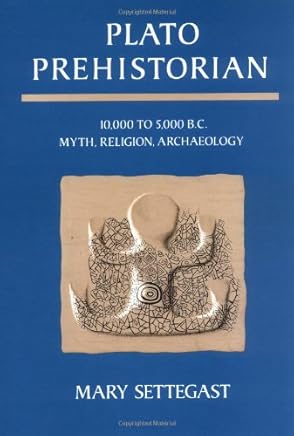anka
The Living Force
Luckily enough, I have just found a single second-hand copy in Czech for 20 EUR and contacted the seller. It should arrive by Wednesday (unless someone pays more). Let us know how you get on with scanning it. In case you won't manage, I'll be ready to do the job.There is a copy of Plato, Prehistorian in a library somewhere here (it didn't specify), so I made a request for borrowing it. I'll know more when I get a reply, but if it's a clean copy, I can scan it. Unless someone else already has one and wants to do it.Looking forward to reading these three books!
BTW, on Graham Hancock's website there is this interesting article that mentions Mary Settegast's work (Mircea Elliade listed as one of the author's sources too).:
The Religion With No Name
Brian C. Muraresku
April 10th, 2015
...
An Unknown Upper Paleolithic Ancestor
But how far back does this confrontation with death reach? With the authenticity of my feminism in deservedly serious jeopardy, I am relieved to finally highlight the scholarship of the first woman to appear here, Mary Settegast. It is frankly embarrassing how men, both ancient and modern, have cornered the market on these topics. It seems only appropriate that as we examine our pre-literate roots (before writing came on the scene in Egypt and Mesopotamia around 3200 BC), Settegast should lead the way with her phenomenal Plato Prehistorian: 10,000 to 5,000 BC Myth, Religion, Archaeology. In a remote and nearly forgotten episode of our archaic past, just as the Paleolithic was giving way to the Neolithic, something extraordinary has been tucked away, awaiting inspection. An “Upper Paleolithic culture, probably Anatolian, of which hardly anything is known”32 seems to have been in possession of the “secret doctrine”. Exclusively by word of mouth, they managed against all odds to convey the sacred rites by which it was communicated past the boundary of the last Ice Age – 11,500 years ago – where they suddenly show up at the Catalhoyuk site in modern-day Turkey in 7,500 BC.

For the obvious reason that there are no records of this event, where linguists must concede their specialty to archaeologists, the unbelievable antiquity of the spiritual roots of Western Civilization has never been properly considered part of the Classics curriculum (nor part of our history in general). This is prehistory, after all. As a result, few aside from Settegast have ever explored the possibility that the initiations of Ancient Greece trace back in an unbroken, continuous line to the hunters and gatherers of the Paleolithic eastern Mediterranean. The evidence is certainly there, however, for “a thriving center of cult life, one whose shrines were enriched by decorations and statuary which recall the later mystery religions of Iran and Egypt, as well as the Aegean and Anatolia”. Indeed, the findings at Catalhoyuk are seen by Settegast to “suggest that the freeing of the soul in life, the rebirth of the living individual onto a higher plane of being, was the goal toward which the Catal[hoyuk] rites were aimed”.33 We seem to have a match!
Rather than scrapping together a miserable existence, our uncivilized forebears in Asia Minor may have been busy perfecting a ritual that would somehow survive 7,000 years, to be assimilated by a huge swathe of the Ancient Greek world. Only slightly east of the place where democracy and the sciences first came to light, Catalhoyuk – the land of Homer and the Trojan War – couldn’t be better situated. But if a smoking gun is going to emerge anywhere to prove the merits of this theory, my bet is the on-going dig at another site due east named Gobekli Tepe (90% of which remains unexcavated). First opened in 1995, the presence of a ritual complex in the 10th millennium BC has already been confirmed – making this, per the Smithsonian, “the world’s first temple”. Topographic scans have indicated that additional structures waiting to be unearthed could date even further back to 13,000 BC! Was Gobekli Tepe the brainchild of the same unknown “Upper Paleolithic culture” behind Catalhoyuk? Are these the true spiritual ancestors of Western Civilization?
If a Stone Age people really did manage to transmit those secret rites in the absence of written language for thousands of years, then the visionary experience that was their core can properly be termed the longest-surviving religion the world has ever known. Ironically, no one’s ever heard of it. It does not have a name, and perhaps it never did. But if any religion is going to recapture the hearts and minds of a spiritually thirsty generation, this is the one! When the mysteries finally showed up in Ancient Greece – across the most improbable expanse of time – Plato and his disciples were keen to seek admission and initiation. Amazed and transformed by their glimpse of immortality, the creators of Western thought ensured that the tireless efforts of our Upper Paleolithic and Neolithic ancestors did not go to waste. Under penalty of death for exposing the big secret, they nonetheless committed their visions to a language which almost nobody understands today. It was worth the risk for our species to retain memory of the single most unique event a human being could ever experience. This was a serious and cherished experience that worked for their world, and no doubt works for ours – the spitting image as we are of so many Ancient Greek institutions and disciplines. Our society can no longer afford its unexplained ignorance of the “secret doctrine”, something so integral to our founders’ worldview. To dismiss this religion is to deny our birthright, and to totally misinterpret the whole point of Western Civilization. Unlike any other in the history of our planet, this religion has stood the test of time. It is our collective responsibility to acknowledge its influence in our past, to reincorporate it into the 21st century and – in continuing imitation of our ancestors – to carry it forward to those new worlds being birthed in this solar system and beyond.






